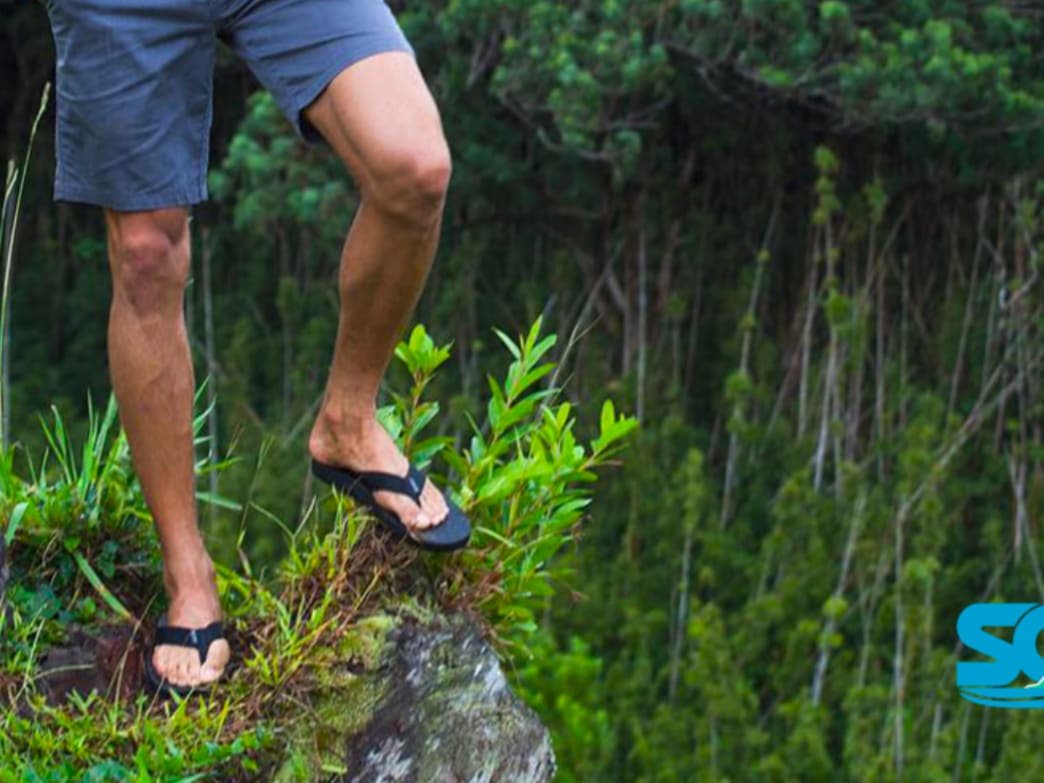
Taking the ‘Flop’ Out of “Flip-Flops”: How Scott Hawaii’s Sandals Outlast Them All
Share
For fourth-generation shoemaker Steve Scott, his family business is more about a long-term relationship than making footwear. “We get customers who’ve been wearing our shoes for 30 to 40 years,” says the Scott Hawaii CEO. “We literally get customers walking in our door wearing a pair of our shoes that they’ve had for years. They want to replace them with the same shoe and are happy to find out that we’re still making that same style. Lots of footwear out there is very trendy, but we make something you’re going to wear for decades.”
The signature Scott Hawaii design that Steve’s referring to is that open-toed summertime classic, the flip-flop. Around the company’s Honolulu base of operations, they call it a slippah, a local interpretation for the slip-on, slip-off sandal that’s synonymous with sunshine, sand, and surf. “We’re a Hawaii-based company,” Scott says. “It’s the best place on earth, and we make the best slippahs for this environment.”
Crafting Shoes for Over a Century
Scott Hawaii’s roots in footwear can be traced back to the early 1800s in Marblehead, Massachusetts. From there, the family business moved to Philadelphia and on to LA by the end of the 19th century. Steel-toed work boots and rugged footwear was their specialty in the early years, a niche they took to Hawaii in 1932 to serve dock workers and crews employed on sugar and pineapple plantations.
America’s entry into World War II brought supply shortages, including a temporary halt in the supply of zori, the traditional Japanese thong sandals that many Americans on the islands and along the West Coast had adopted as their own. Scott Hawaii shifted gears, selling their open-toed sandals locally and at the Navy Exchange at Pearl Harbor. By the end of the war, their reputation for making classic, durable, wear-everywhere flip-flops was established.
Contoured to Your Foot
The same mix of quality materials and thoughtful production that served the Greatest Generation before and during WWII still turns shoppers into lifelong customers today. “We haven’t tried to re-do too much,” Scott says. “Over the years, we developed good foot lasts and other manufacturing equipment for both men and women. There are just some things we’ve learned over time, a lot of time, that gives us consistency from year to year and production to production.
“Here in Hawaii, we wear slippahs all the time,” Scott says. “We have a lot of local podiatrists who prescribe our slippahs instead of an expensive orthotic for the support in the heel and arch. Our shoes don’t flatten out like some other brands.”
Scott Hawaii shoes have built-in arch support, and most designs are constructed with a molded outsole and heel cup for better foot stabilization. If you find the sandals to be heavier than other brands, that’s because Scott Hawaii rubber soles are built for better wear, more support, and a higher level of comfort than lightweight versions. The rubber soles also have a non-slip tread, a mandatory feature to the water-loving majority of Scott Hawaii customers.
Traditional Techniques, Cutting Edge Materials
While time-tested manufacturing methods have endured, materials have evolved as new options for greater durability and performance become available. “In 1942, we made footwear with tire-tread soles,” Scott says. “We didn’t have molded rubber and EVA soles like we do now.
“Today, insole material is a combination of the cushioning of EVA with 20 to 25-percent rubber mixed in,” he notes. “The material, called Rubalon, doesn’t give you compression, and it has better memory and wearability than EVA alone.” Rubalon is also heat- and crack-resistant, so it stays soft and pliable, even after long days in the sun and water.
Sunrise to Sunset Style
A solid sandal is top priority, but the Scott family knows that style is what sells a shoe. “You buy footwear based on looks,” Scott says. “That’s your first, ‘I want that’ moment. Then you try it on. We try to get that visual and give you wearability, too.”
Women’s lines incorporate the same fit and materials as the men’s line but add variety so you can pick a pair to go with a certain outfit or season. Women’s flip-flops, like the yoga mat sandal, are typically lighter but still have good support and softness that won’t flatten out over time.
For a night out, men’s and women’s lines with leather straps and insoles give you that polished yet comfortable look. Vegan leather is also an eco-friendly option for in-town wear, but the majority of Scott Hawaii customers are looking for a beach, watersport, or fishing shoe.
“Most of our shoes are designed with nylon straps, and almost all of those are lined with neoprene,” Scott says. “That wetsuit material gives our flip-flops a good feel against the foot that holds up well in the water. They’re quick-drying, so you can throw them in the washing machine for a quick clean up, and they look brand new.”
Scott Hawaii’s product line also includes attention-grabbing slippahs for tiny feet and cost-conscious parents. “We design children’s shoes that are fun to wear at an affordable price,” Scott says. “They’ll never wear out before your kids grow out of them, but they’ll see plenty of wear.” What about adults? “Wear them every day, all day, for three, four, five years, and you’ll be just fine.”
Written by Ann Gibson for Matcha in partnership with Scott Hawaii.
